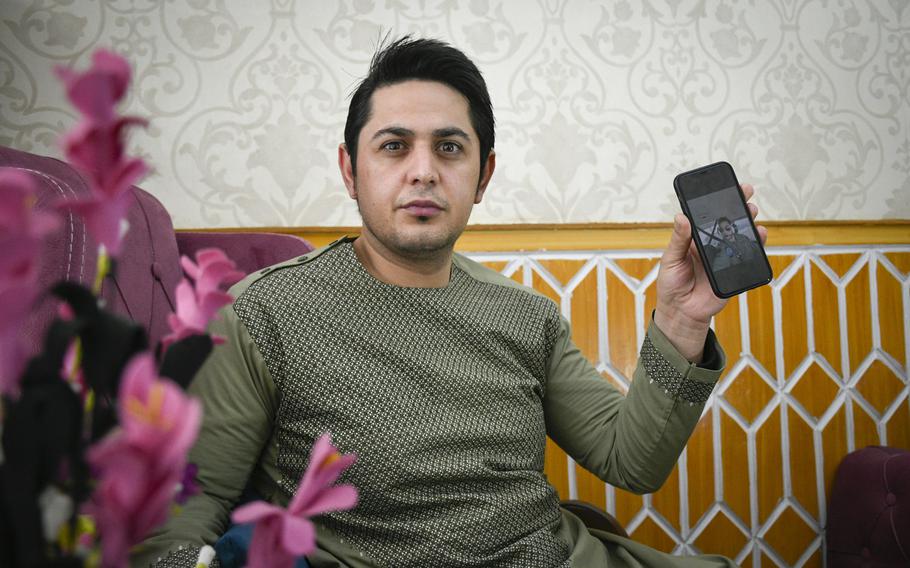
Bashir Ahmad Vesa mourns the death of his brother, Massoud Atal, an Afghan pilot shot by gunmen in Kabul, Afghanistan on Dec. 30, 2020. Vesa keeps photos of his younger brother to keep his memory alive, he said on Jan. 21, 2021. (J.P. Lawrence / Stars and Stripes)
KABUL, Afghanistan – An Afghan air force pilot has again applied for refuge in the United States after the Pentagon reversed its previous decision to endorse his move.
The government is reviewing Maj. Mohammed Naiem Asadi’s new application for Significant Public Benefit Parole, a temporary status for noncitizens in need of protection, his lawyer Kimberley Motley said Sunday.
“It’s tragic that Maj. Asadi and his family have to leave Afghanistan, but if they don’t, they’ll probably be killed,” Motley said. She said she does not have a time frame for a decision.
U.S. Citizenship and Immigration Services spokeswoman Victoria A. Palmer declined to comment on Asadi’s case, citing privacy restrictions.
Last year, Asadi received a rare endorsement by the Pentagon to move to America with his family because he was in “imminent danger of being killed by the Taliban,” approval documents said.
But the Defense Department withdrew its approval, saying that senior officials had not been consulted. A Pentagon spokesman told The Wall Street Journal last year that so many military personnel are under threat that letting them seek refuge in America would “absolutely gut the Afghan security forces.”
The reversal angered U.S. advisers who vouched for Asadi. The helicopter pilot had protected the life of a downed U.S. flyer last year and had been, by one adviser’s estimate, in the cockpit for 70% of all missions in southern Afghanistan.
“The U.S. government agreed to get him out of the country … once you make the move, there’s no going back,” said John S. Anderson, a retired Army chief warrant officer who helped train Asadi.
As Asadi remains in hiding, a wave of assassinations has claimed the lives of two other pilots, who died in shootings in Kandahar and Kabul in recent weeks.
The targeted killings are part of the continuing bloodshed in the country, which Afghan officials say has included at least 20,000 Afghan troop deaths in the past two years.
The killings underscore the threats pilots face, despite the billions invested by the U.S. into developing the country’s fledgling air force and its personnel.
“You’re spending a lot of money to train them, and then, a person comes and shoots them for a few hundred dollars,” said Waheed Atal, brother of Masood Atal, the pilot killed in Kandahar. “What’s the point, making him a pilot … if you cannot protect him?
Pilots who report threats against them often receive little sympathy and may be threatened with punishment or even imprisonment, said Niloofar Rahmani, Afghanistan’s first female fixed-wing pilot.
Rahmani, who received asylum in the U.S. in 2018 after receiving numerous death threats, said when she brought up her concerns, “instead of supporting me, helping me … they came up and said I am lying about everything.”
U.S. and Afghan military officials say that there are efforts to better protect pilots but would not give specific details, citing a need to not reveal security measures to the Taliban.
Asadi on Friday said he was hopeful he could one day come to America with his wife Rahima and their four-year-old daughter, Zainab.
“I am happy and feeling positive,” he said in a text message. “I hope they keep their promise.”
Zubair Babakarkhail contributed to this report.
lawrence.jp@stripes.com Twitter: @jplawrence3